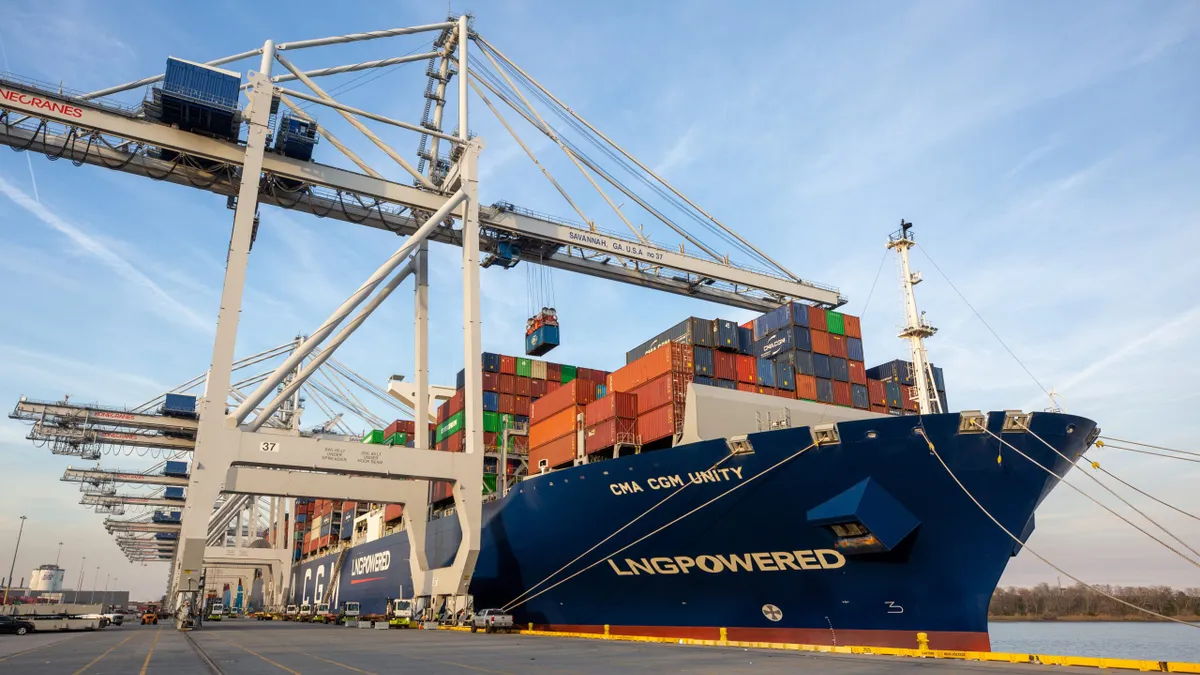Major U.S. ports are expecting a summer surge in imports as retailers capitalize on the 90-day reduction of China-based tariffs, according to the Global Port Tracker published Tuesday by the National Retail Federation and Hackett Associates.
After months of inventory frontloading as a tariff mitigation tactic, shippers began to halt ocean shipments from China in April to limit their exposure to heightened duties. Freightos reported at the time that reciprocal tariff pressures spurred China-to-U.S. freight to drop up to 50%.
In late May, the reduction in China-based tariffs pushed shippers to resume frontloading efforts to import cargo during the 90-day reprieve, prompting an uptick in Transpacific bookings.
“Retailers had paused their purchases and imports previously because of the significantly high tariffs,” NRF VP for Supply Chain and Customs Policy Jonathan Gold said in Tuesday's report. “They are now looking to get those orders and cargo moving in order to bring as much merchandise into the country as they can before the reciprocal tariff and additional China tariff pauses end in July and August.”
The NRF anticipates that the reduction of China tariffs will prompt imports to bounce back in June, although numbers are muted compared to last year. It remains to be seen how the U.S. and China's progress this week on a new deal related to tariffs will influence shippers' plans. The proposal, which is still subject to final approval by U.S. President Donald Trump and China President Xi Jinping, would set a 55% total tariff on imports from China while the U.S. would maintain a 10% duty.
U.S. ports covered by the port tracker are forecasted to handle 2.01 million twenty-foot equivalent units in June, down 6.2% year over year. July is slated for 2.13 million TEUs, down 8.1% YoY, with August expected to handle 1.98 million TEUs, down 14.7% YoY
September volumes are expected to drop significantly, especially compared to last year when shippers were pushing to frontload cargo due to labor tensions at East and Gulf Coast ports. The NRF reported that September volumes are forecast to drop 21.8% YoY at 1.78 million TEUs. October volumes are expected to drop as well, down 19.8% YoY at 1.8 million TEUs.
In total, the current forecast would bring H1 2025 to 12.54 million TEUs, up 3.7% YoY, per the NRF tracker. While that total is better than the initial forecast announced prior to the tariff reprieve, it's still below the expected 12.78 million TEU projection given prior to the tariffs announced in April.
“The peak for the winter holidays will come early this year, making it simultaneous with the peak for the back-to-school season,” said Hackett Associates founder Ben Hackett. “If higher tariffs are not delayed again, we can expect the final four months of the year to see declining volumes of imports.”
The Global Port Tracker, produced for the NRF by Hackett Associates, provides historical data and forecasts for major U.S. ports, including the Port of Los Angeles, the Port of Long Beach and the Port of New York and New Jersey.
Editor's note: This story was first published in our Logistics Weekly newsletter. Sign up here.















